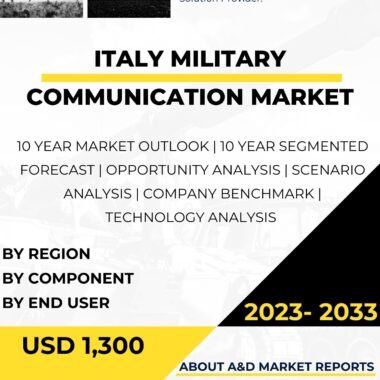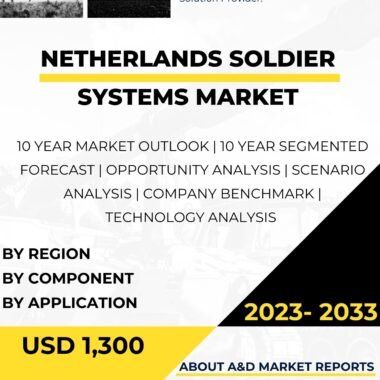Description
Germany soldier systems market has been a significant and dynamic segment within the country’s defense industry. Soldier systems refer to a wide range of individual equipment, clothing, and personal protective gear designed to enhance the capabilities and survivability of soldiers in the field. These systems are crucial for modernizing and equipping the German Armed Forces (Bundeswehr) with state-of-the-art equipment to meet the challenges of modern warfare and ensure the safety and effectiveness of the country’s soldiers.
The Germany soldier systems market encompasses various types of equipment, including advanced combat uniforms, body armor, helmets, boots, communication systems, night vision devices, individual weapon accessories, and load-carrying equipment. These systems are designed to be lightweight, ergonomic, and modular, allowing soldiers to customize their gear based on the mission and operational requirements.
One of the primary drivers of the Germany soldier systems market is the country’s commitment to maintaining a highly capable and modernized armed forces. As a key member of NATO and a leading European economy, Germany recognizes the importance of investing in advanced soldier systems to enhance the capabilities and readiness of its troops.
The market is also influenced by Germany’s participation in international peacekeeping and stabilization missions. As Germany contributes to various multinational operations and deploys soldiers in different environments, the need for versatile and adaptable soldier systems becomes paramount.
Moreover, the Germany soldier systems market is driven by the changing nature of modern warfare and the evolving needs of soldiers on the battlefield. As threats become more diverse and asymmetric, soldier systems must continuously evolve to provide the necessary protection and advantages to the troops.
In recent years, there has been a growing emphasis on incorporating advanced technologies into soldier systems. Germany is investing in the development of integrated soldier systems that leverage cutting-edge technologies, such as wearable sensors, augmented reality displays, and AI-assisted decision support tools. These advancements aim to improve situational awareness, communication, and operational effectiveness for individual soldiers and units.
The export potential of German soldier systems is another critical aspect of the market. Germany’s reputation for producing high-quality and reliable defense equipment has made it an attractive supplier for other countries seeking advanced soldier systems. However, export decisions are subject to international regulations and political considerations, especially when it comes to sensitive military technologies.
Challenges faced by the Germany soldier systems market include the need to balance investments in soldier equipment with other defense priorities. Soldier systems can be resource-intensive to develop, procure, and maintain. Decision-makers must carefully prioritize investments to ensure that soldier system capabilities align with Germany’s broader defense requirements.
Furthermore, the Germany soldier systems market must address challenges related to research and development. As technology continues to evolve rapidly, ongoing investment in research and development is critical to maintaining the technological edge of soldier systems and ensuring they remain relevant and effective in the future battlefield.
The market also needs to address concerns related to the integration of soldier systems with other military assets and the need for seamless interoperability across different branches and units of the armed forces. Ensuring that soldier systems can communicate and exchange data with other platforms and command structures is essential for maximizing the effectiveness of the overall force.
In conclusion, the Germany soldier systems market is a significant and dynamic segment within the country’s defense industry. Advanced soldier systems play a crucial role in enhancing the capabilities and safety of Germany’s soldiers, supporting their operational effectiveness, and contributing to the country’s defense strategy. The market is driven by Germany’s commitment to maintaining a modern and capable armed forces, technological advancements in soldier systems, and the need to balance investments with other defense priorities. As Germany continues to invest in research and development and explores innovative soldier system solutions, the soldier systems market is expected to play an increasingly pivotal role in shaping the country’s military capabilities and ensuring the readiness of its troops.




